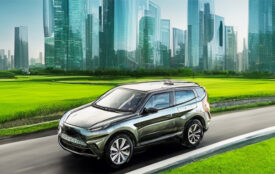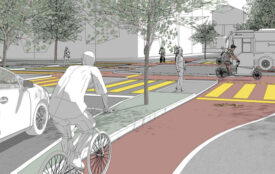How will people react to driverless cars?
What happens when humans let go of the steering wheel and hand over driving to technology? Traffic psychologist Mette Møller sees both advantages and potential problems.
It is easy to get excited about the new opportunities offered by driverless transport. Ninety-five per cent of the injuries that take place on the road today are believed to be attributable to human error so safety is likely to be significantly improved once driverless technology takes over.
However, we are a long way from having a complete driverless transport system, and during the transition phase, we must stop to consider how humans interact with technology. Will we accept technology determining the flow of traffic? Will we paralyse traffic, safe in the knowledge that the cars will never run us over? Traffic psychologist Mette Møller from DTU Management Engineering conducts research into the dangers and pitfalls of our transition towards driverless transport.
Are human beings ready for driverless cars?
“That’s a really good question. I’m really tempted to say ‘no’ given that the human brain hasn’t moved on since the Stone Age. On the other hand, I’d better say ‘yes’ because from an evolutionary standpoint our brains aren’t suited to driving. Humans are designed to move at walking or running speed where we can detect dangers and respond to them. It’s not easy for us to gauge the speed of an oncoming object and our brains can only focus on one thing at a time, which causes problems when making a right turn, for example.
With practice, we can become good at quickly and safely changing focus, but as humans we are prone to making mistakes—it cannot be avoided—and many drivers are foolhardy enough to believe that they can both keep an eye on the road and talk on the phone.
All of this can be compensated for by the automatic car. The technology can obtain information from several directions simultaneously and will not be distracted by extraneous thoughts or chores. However, when it comes to reading other people’s micro-signals—e.g. whether they are about to change direction, or have seen the car moving towards them—we humans are still light-years ahead.
A lot of these issues can be solved technologically, but there remains the mammoth task of disciplining both ‘drivers’ of the automatic vehicles and other road users.”
What challenges do you foresee?
“Initially, I assume that driverless vehicles will run on special lanes isolated from normal traffic, but if driverless cars become a natural part of everyday traffic, the technology must be able to account for the unpredictable tempos and patterns of movement of pedestrians and cyclists. This is no simple task, however. And what if pedestrians simply cross the road in the knowledge that driverless cars are programmed to stop? Then traffic grinds to a halt. Humans are ingenious and we do not always follow the rules.
Our current knowledge about driverless cars is primarily based on simulations and controlled tests conditions. We therefore do not know how people will behave—e.g. what they might do to make their autonomous car go faster.
Another interesting aspect is that a car has traditionally been associated with individuality and freedom. With automatization this is destined to change, as people will not have the same degree of influence over their driving experience. The automation of vehicles represents a major paradigm shift in relation to current modes of transport.
There will also be a series of challenges regarding the competences that are required to use these vehicles. You might think that a driver’s license is no longer necessary if the vehicle is self-driven, but as long as the vehicle is not 100 per cent self-propelled, drivers must still be familiar with the system and its limitations—just as they must be able to take over if the situation requires it—even if this is a rare occurrence.
The technology certainly holds out great potential, as it can compensate for human limitations, but in order to fully exploit this potential, we need to know how man and technology best work together.”








